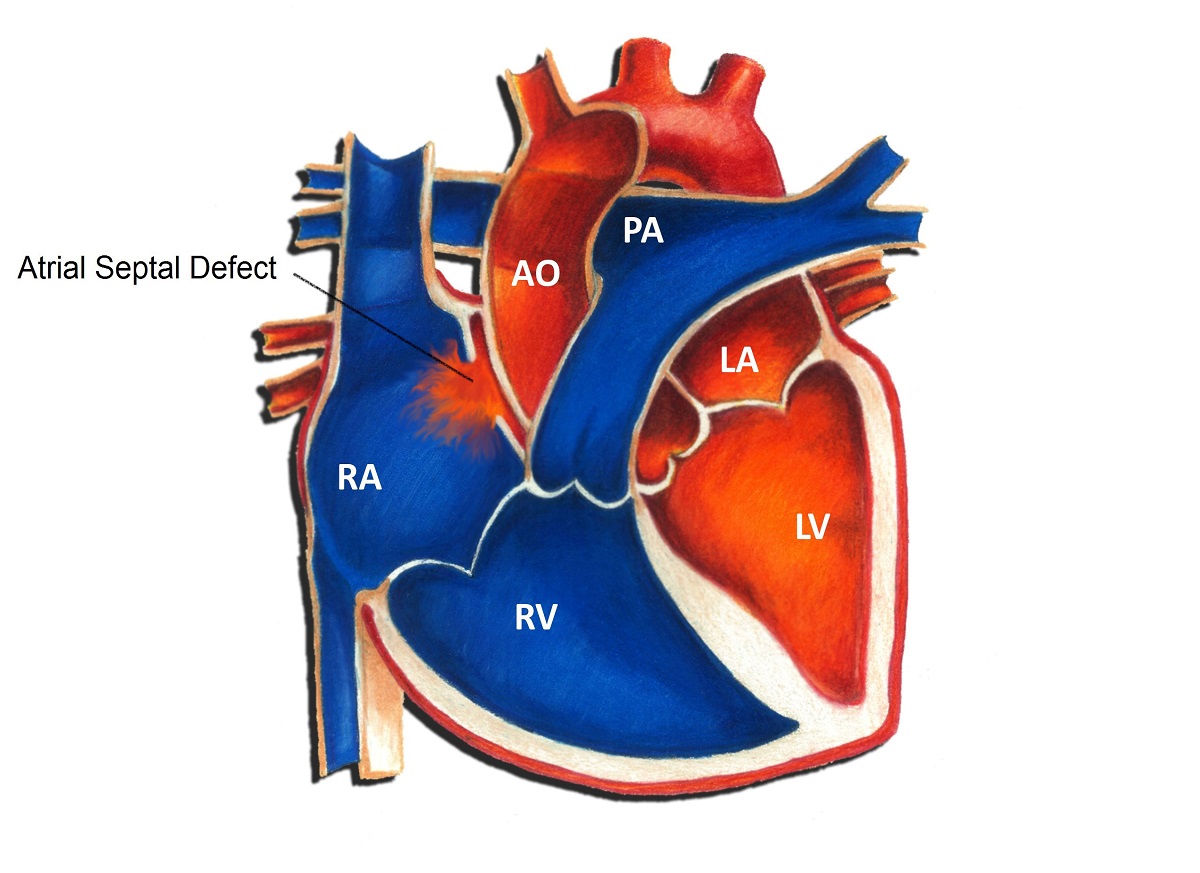
An atrial septal defect is an opening in the divider between the two upper chambers of heart (atria). The condition is available from birth (inherent). Small atrial septal imperfections for the most part emerge during infant age or early youth.
As a child develops in the womb, a divider (septum) shapes those partitions the upper chamber into a left and right atrium. An irregular arrangement of this divider can bring about an imperfection that remains after birth. This is called an atrial septal defects, or ASD.
Huge and long-standing atrial septal imperfections can harm the heart and lungs. Little deformities may never bring about an issue and might be discovered unexpectedly. A grown-up who has had an undetected atrial septal imperfection for a considerable length of time may have an abbreviated life expectancy from heart disappointment or hypertension that influences the supply routes in the lungs (aspiratory hypertension). Surgery might be important to repair atrial septal imperfections to avert complexities.

Atrial septal defects can be several types including:
Secundum– This is the most widely recognized kind of ASD and occurs in middle of the divider between the atria (atrial septum).
Primum– This deformity happens in the lower some portion of the atrial septum, and may happen with other congenital heart problems.
Sinus venosus– This uncommon deformity happens in the upper piece of the atrial septum.
Coronary sinus– In this uncommon imperfection, some portion of the divider between the coronary sinus which is a piece of the vein arrangement of the heart and the left chamber is absent.
The cause is usually unknown. Genetic factors can sometimes play an important role.
Each child is conceived with an opening between the upper heart chambers. It’s a typical fetal opening that permits blood to bypass far from the lungs before birth. After birth, the opening is not require anymore and normally closes or turns out to be small inside half a month or months.
Sometimes opening is bigger than ordinary and doesn’t close after birth. In most kids the cause isn’t known. A few children can have other heart disorders alongside ASD.

The measure of an ASD and its area in the heart will figure out what sorts of indications a youngster encounters. Most children who have ASDs appear to be sound and seem to have no side effects. By and large, they feel well and develop and put on weight ordinarily.
Kids with bigger, more extreme ASDs, be that as it may, might have some of these signs or side effects:
In the event that an ASD is not treated, well-being confusions can grow later, including an irregular heart beat (known as an atrial arrhythmia) and issues identified with dissemination and pumping methodology of the heart. As children with ASDs get more established, they likewise may be at an expanded hazard for stroke, since a blood coagulation that creates can go through the opening in the divider between the atria and go to the cerebrum. Aspiratory (hypertension in the lungs) likewise can create after some time in more established patients with bigger untreated ASDs.
Luckily, most children with ASD are analyzed and treated much sooner than the heart deformity causes physical side effects. On account of the intricacies that ASDs can bring about sometime down the road, pediatric cardiologists regularly prescribe shutting ASDs ahead of schedule in childhood.
For more Information visit here:- https://www.docopd.com/en-in/lab